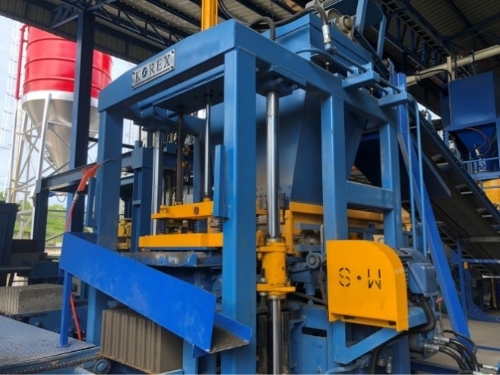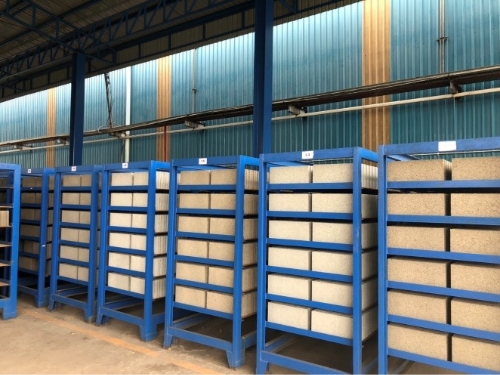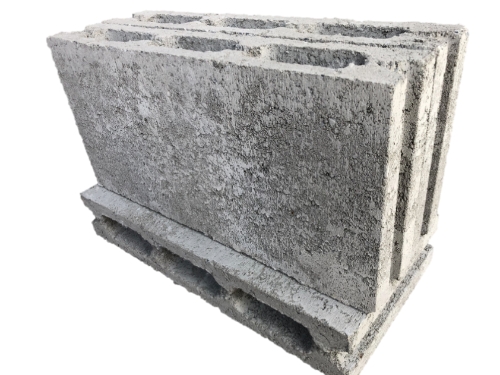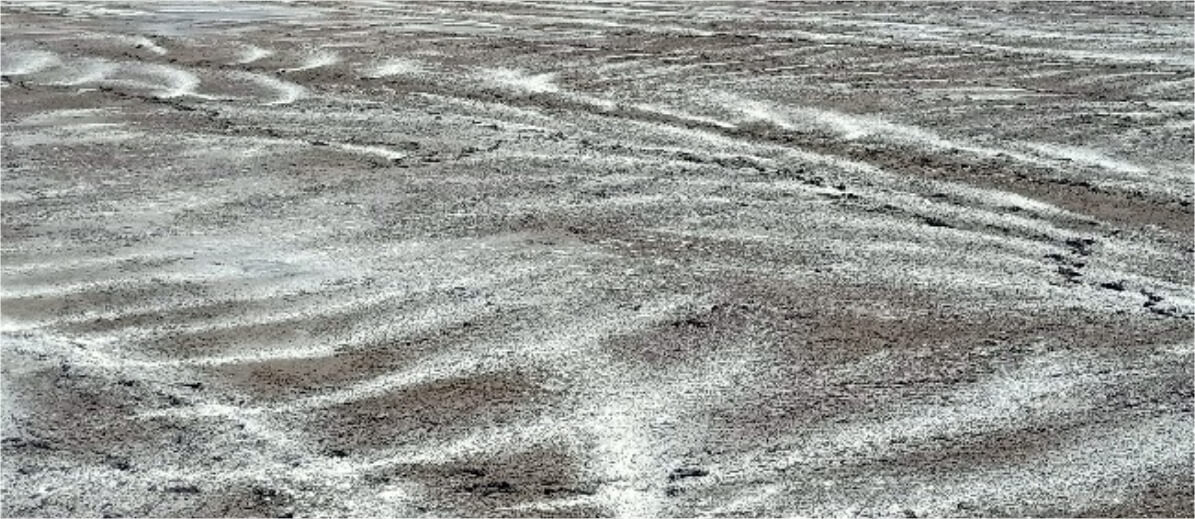Waste Management
Waste Management
SCGP manages elimination of pollutants, and industrial waste according to 3R's (Reduce, Reuse, Recycle) and Circular Economy principles. We continuously improve, upgrade the production process and develop research and innovation to maximize pollutants and waste reductions throughout the supply chain. We also recycle the production waste as raw materials and waste-to-alternative fuel, also convert to value-added products. Therefore, we can reduce the use of raw materials from natural resources and minimize the impacts on the environment and society.
Strategy
| Target | 2023 Performance |
|---|---|
| Zero Industrial Waste to Landfill Every year in Thailand |
0 ton to Landfill Y2023 in Thailand |
| Waste to incineration without energy recovery target in Thailand (Intensity) 0 kg. waste / production in tons Target Y2024 (100% from base year 2014) |
Waste to incineration without energy recovery performance in Thailand (Intensity) 0 kg. waste / production in tons |
| Non-Hazardous Waste Generation in Thailand (Intensity) 307 kg. waste / production in tons Target Y2024 |
Non-Hazardous Waste Generation in Thailand (Intensity) 289 kg. waste / production in tons |
| Hazardous Waste Generation in Thailand (Intensity) 0.9 kg. waste / production in tons Target Y2024 |
Hazardous Waste Generation in Thailand (Intensity) 0.93 kg. waste / production in tons |
Unit: Metric tons
| SCGP Waste Management | 2019 | 2020 | 2021 | 2022 | 2023 |
|---|---|---|---|---|---|
| (1) Total Waste Recycled/Reuse | 507,000 | 536,000 | 788,000 | 1,066,698.62 | 982,549.16 |
| (2) Total Waste Disposed | 507,342 | 531,020.77 | 740,000 | 516,380.50 | 417,625.62 |
| (2.1) Waste Landfilled | 0 | 0.77 | 18,000 | 12,236.06 | 7,519.10 |
| (2.2) Waste incinerated with energy recovery | 570,000 | 531,000 | 686,000 | 457,394.89 | 377,158.34 |
| (2.3) Waste incinerated without energy recovery | 342 | 20 | 36,000 | 46,749.55 | 32,406.08 |
Unit: Thousand tons
| SCGP Waste Management (In Detail) | 2019 | 2020 | 2021 | 2022 | 2023 |
|---|---|---|---|---|---|
| Hazardous Waste | |||||
| Hazardous Waste Generation (Thousand Tons) | 2.00 | 2.66 | 63.95 | 48.4 | 87.7 |
| Hazardous Waste Generation Intensity (Kilograms per Ton of Production) | 0.58 | 0.79 | 11.20 | 8.72 | 15.9 |
| Hazardous Waste Management (Thousand Tons) | |||||
| - Reuse / Recycled / Other Recovery / Incineration with energy recovery | 1.8 | 2.7 | 50.2 | 39.5 | 80.5 |
| - Incineration without energy recovery | 0.06 | 0.02 | 0.06 | 0.21 | 0.03 |
| - Landfilled (Tons) | 0.00 | 0.77 | 14,804 | 8,731 | 7,208 |
| Hazardous Waste in the storage at the end of year (Thousand Tons) | 0.13 | 0.11 | 0.18 | 1.18 | 0.95 |
| Non Hazardous Waste | |||||
| Non Hazardous Waste Generation (Thousand Tons) | 1,053.91 | 1,042.74 | 1,488.86 | 1,467.01 | 1,358.73 |
| Non Hazardous Waste Generation Intensity (Kilograms per Ton of Production) | 306.19 | 310.40 | 261.20 | 264.43 | 245.83 |
| Non Hazardous Waste Management (Thousand Tons) | |||||
| - Reuse / Recycled / Other Recovery / Incineration with energy recovery | 1,074 | 1,064 | 1,470 | 1,429 | 1,279 |
| - Incineration without energy recovery | 0.28 | 0.00 | 36.1 | 36.0 | 32.4 |
| Landfilled (Tons) | 0.00 | 0.00 | 2,946 | 3,505 | 312 |
| Non Hazardous Waste in the storage at the end of year (Thousand Tons) | 145 | 124 | 103 | 105 | 152 |
Lime mud management
Transform Fly Ash and Bottom Ash to Construction Blocks
Nowadays, Thai Cane Paper Public Company Limited, Prachinburi factory produces steam and electricity using coal as fuel in the paper-making process. After the coal fuel combustion process, the residual leftover is in heavy ash (bottom ash) and light ash ( fly ash). In general, the ash is disposed of by landfills. With the strong determination towards the zero-landfill goal of waste from the production process, the Prachin factory puts efforts into ash management in two ways: using it in construction block production and as industrial waste disposal treated in cement kilns.
In 2020, there was a project to install an Automatic Ash Block machine in the production line. The project consisted of the area – and - buildings improvement for installing the machinery, storing ash blocks, and installing other equipment to assemble the ash block production line as Storage Cement Tanks and Heavy Ash-Storage- Barn.
It is an ongoing project; the research studies' results show that heavy ash (Bottom ash) and Light ash (Fly ash) contain unique properties suitable for construction blocks. The outcome of this project; the factory can increase ash block production capacity by having more ash and reducing disposal costs of firing at the Cement Kiln. In addition, it helps reduce the impact on the air environment - the risk of scattering particles during transport. In addition, the use of ash as raw material in the construction block-production maximizes the waste resource benefit according to the Circular Economy concept and as an upcycled product. In 2021, the proportion of ash disposal to the production of brick increased from the year 2020, at 70:30 to 60:40
BENEFITS FROM THIS PROJECT



Fly Ash as a Substitute for Cement
Improving receiving system of fly ash, the substitution of raw material in Cement Production, for Economic and Environmental benefits
Before Siam Kraft Industry Co., Ltd improved the fly ash receiving system to substitute raw material for Cement Production in the cement factories of SCG Cement Group in Saraburi Province. The traditional fly ash transport depended on a truck. Still, this transportation resulted in higher operating costs due to water spraying to eliminate the dispersion problem while getting fly ash to the truck. The Company developed the new system by transporting fly ash by Bulk Feed Trucks instead of trucks, then storing them in the silo of the cement plant. Though there was no dispersion problem during transportation, the dispersion problem of fly ash dust still occurred while being loaded to use.
In 2020, the Company had jointly studied to solve the dispersion problem at the site with SCI Eco Services Co., Ltd., and The Siam Cement (Kaeng Khoi) Co., Ltd. The Company introduced the technology to use Screw Mixer in spraying water to reduce the dispersion when getting the fly ash from the silo to mix with other raw materials for cement production. At present, The Siam Cement (Kaeng Khoi) Co., Ltd. installed the 2 screw mixers in 2020 at Kiln No.4 and in 2021 at Kiln No. 5.
The Project Outcomes The Company can reduce the fly ash dispersion problem during loading to the Bulk Feed Truck and reduce the disposal cost by approximately 24 million baht per year. And, there is no need to spray water at the starting point, resulting in a cheaper disposal cost.
Moreover, The generated fly ash was reduced by around 30,000 tons every year.
Turn Lime Mud to a Sanitizing Agent for Shrimp and Fish Farms and Soil Conditioner
Both Thai Paper Company Limited and Phoenix Pulp and Paper Public Company Limited generally have lime mud, a natural by-product produced in the pulping process, which has annual disposal cost of 40 million baht approximately. They jointly collaborated with Siam Forestry Company Limited, which has had the license to manage the waste disposal for fertilizer to research lime mud application in the agricultural sector as a soil conditioner to improve soil quality and increase plants' alkalinity nutrients. They have expanded soil conditioner to the market through a distributor, namely, "Ku Din Fertilizer." With further development of lime mud for adjusting the pH in soil and water for shrimp and fish farms, the Company could sell the innovative products to farmers in the Southern and Eastern parts of Thailand in collaboration with the Phetchaburi Coastal Aquaculture Research and Development Center. In 2020, Siam Forestry Co., Ltd., could reduce the amount of disposal waste at 3,500 tons per year, earned income from lime mud disposal management 3 million Baht, and selling products around 2 million Baht. The Company plans to expand the products in a larger market to complete all lime mud in the SCG factories.

Reduce hazardous chemicals in printing inks
Thai Containers Group Company Limited, in collaboration with Innovation and Product Development Center, has researched the extraction of copper from printing inks on cardboard boxes and has opted to use inks with lower copper content. This initiative reduces waste generated from the production process that contains copper. This effort is currently being expanded to all plants in Thai Containers Group Company Limited.
